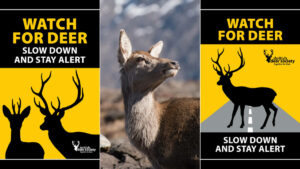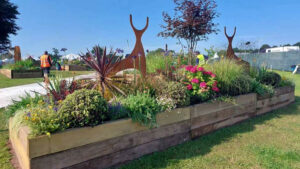ABOUT THE STUDY
Based on Anonymous Field Records from Deer Stalkers
Nicholas J. Aebischer, Christopher J. Wheatley, Hugh R. Rose.
The amount of wounding during routine culling is an important factor in the welfare of wild deer. Little information exists on factors determining shooting accuracy and wounding rates under field conditions in the UK.
In this study, 102 anonymous stalkers collected data on the outcomes and circumstances of 2281 shots. Using hot-deck imputation and generalised linear mixed modelling, we related the probability that a shot hit its target, and the probability that the shot killed the deer if it was hit, to 28 variables describing the circumstances of the shot.
Overall, 96% of deer were hit, of which 93% were killed outright. A reduced probability of hitting the target was associated with an uncomfortable firing position, too little time available, shooting off elbows or freehand, taking the head or upper neck as point of aim, a heavily obscured target, a distant target, shooting at females, lack of shooting practice and a basic (or no) stalker qualification.
An increase in the likelihood of wounding was associated with an uncomfortable firing position, shooting with insufficient time, a distant target (only when time was not sufficient), a bullet weight below 75 grains, a target concealed in thicket or on the move and an area rarely stalked.
To maximise stalking success and deer welfare, we recommend that stalkers ensure a comfortable firing position, use a gun rest, aim at the chest, use bullets heavier than 75 grains, avoid taking a rushed shot, shoot a distant animal only if there is plenty of time, fire only when the target is stationary, avoid shooting at an obscured animal, take care when the ground is unfamiliar, and do shooting practice at least once a month. The high miss rate of basic-level stalkers suggests that training should include additional firing practice under realistic shooting conditions.
This data for this study was collected in 2005 by BDS and forms the basis for ongoing improvements to Best Practice and BDS training. The data was statistically analysed and the paper published in 2014 online by PLOS one
FURTHER READING

Skye DVC Project: Pioneering Safety for Deer and Drivers on Skye
The project aims to raise awareness, engage the community, collect data, build partnerships, and influence driver behaviour to improve safety for both deer and drivers. Read the full blog article to find out more and read Scott MacKenzie from Fearnan Eilean Iarmain estate comments on the project which highlights the importance of targeting driver behaviour and awareness.

RHS Tatton Park Flower Show: A Golden Triumph
Discover how the BDS and talented garden designers Alice Meacham and Trudi Robson triumphed at the RHS Tatton Park Flower Show with their gold medal-winning “Deer O Deer” display. This innovative garden, blending stunning floral arrangements with thoughtful design and steel deer silhouettes, showcases how to create beautiful, deer-friendly spaces.

Apply Now for Funding to Cover the Costs of Your DSC1 and DSC2 Training (England only)
The Forestry and Arboriculture Training Fund is now open for new applications (England only).
Through this fund you may be eligible to receive funding to cover the costs of your DSC1 or DSC2 training with The British Deer Society (BDS). This is a fantastic opportunity for anyone hoping to enhance their competency and skills in deer management.
Funding for courses is limited and we would encourage you to apply now if interested.










